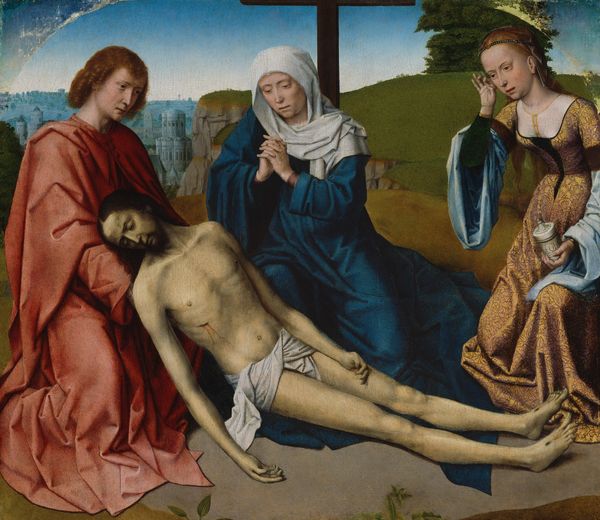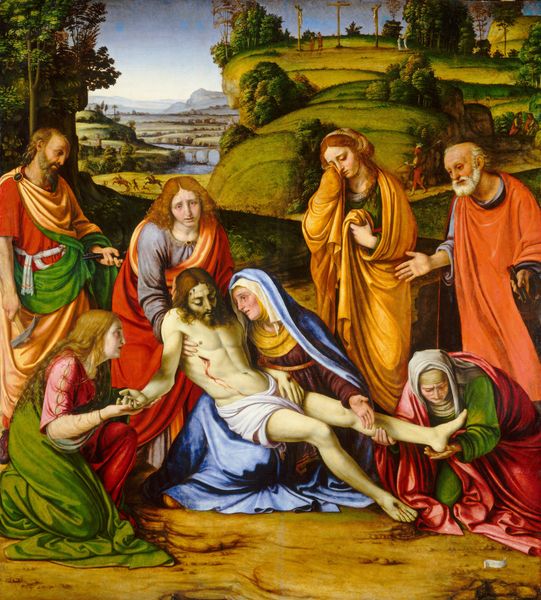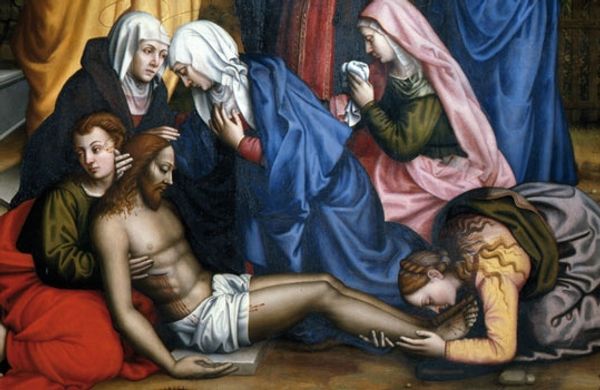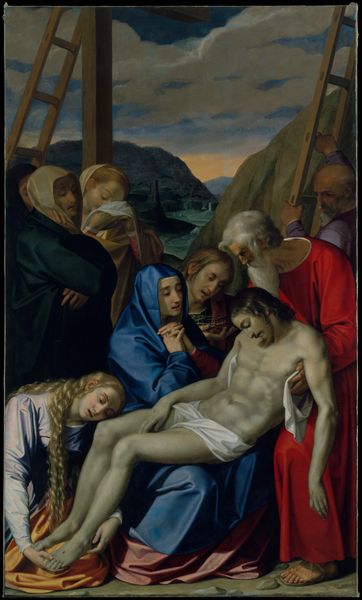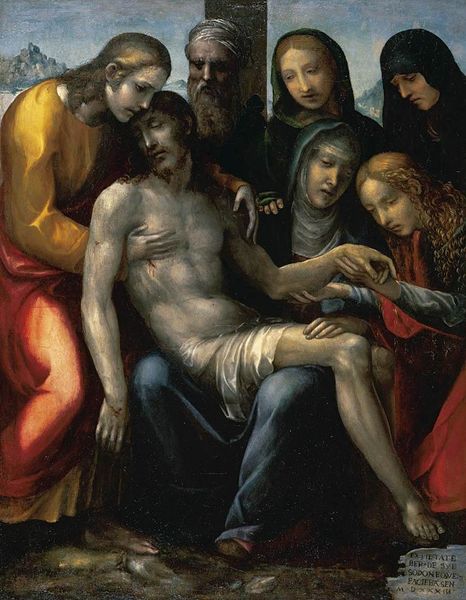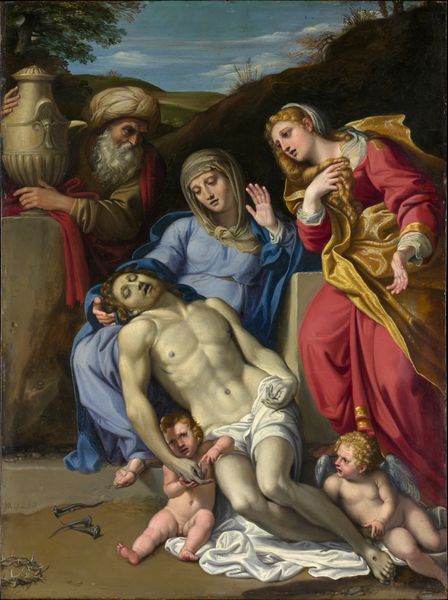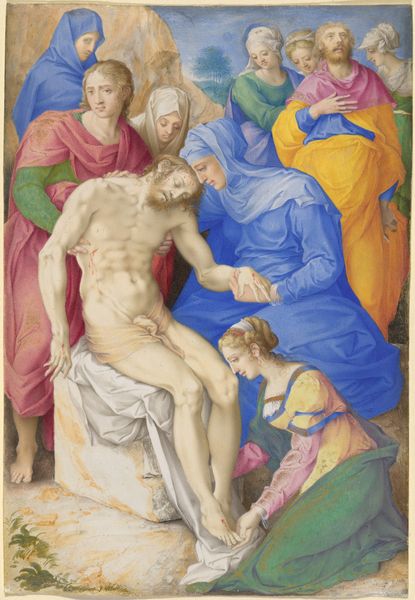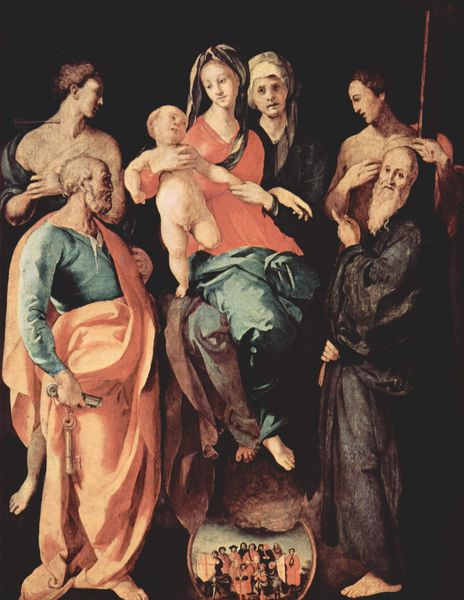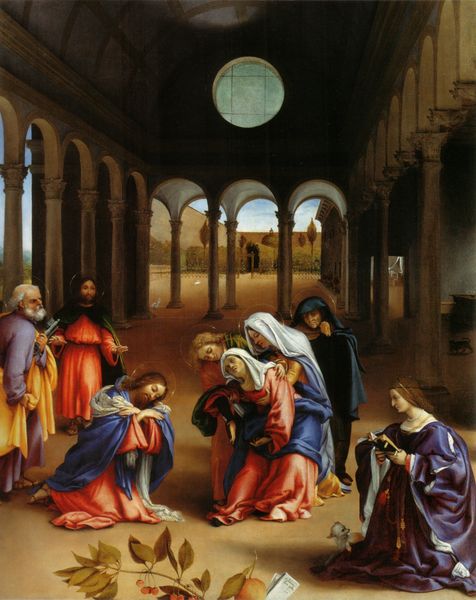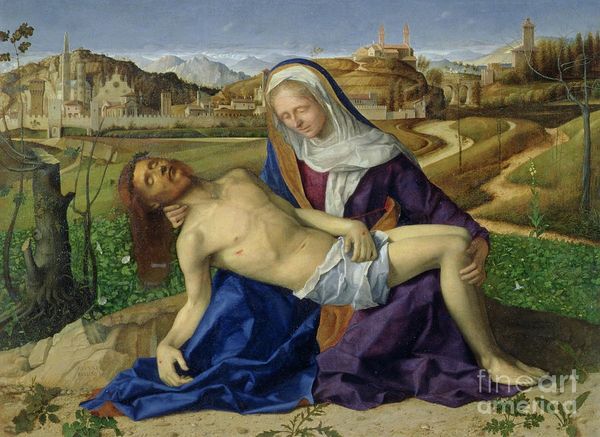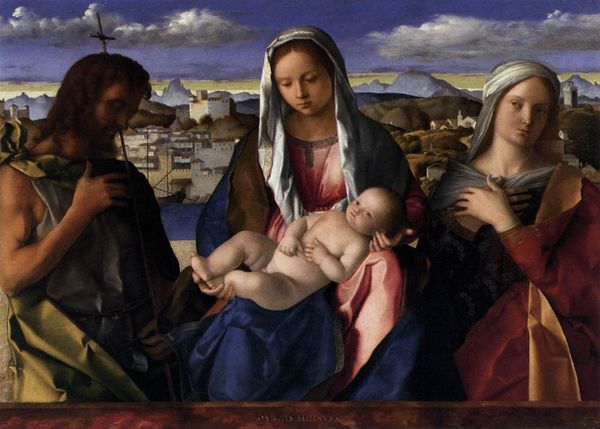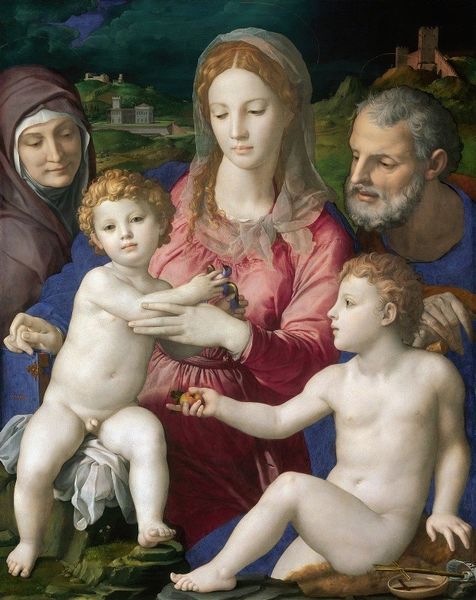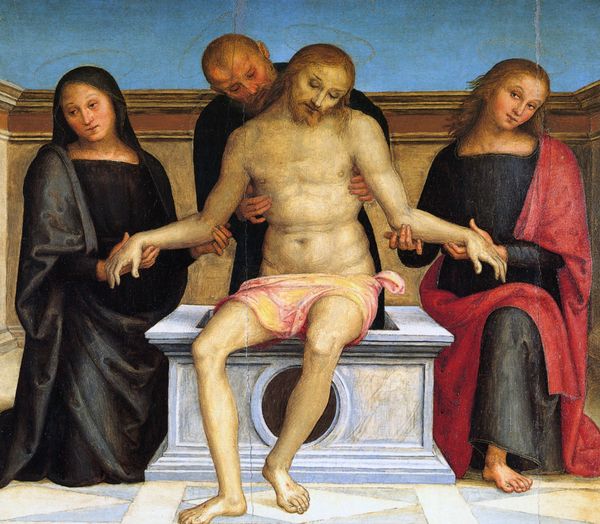
tempera, painting
#
portrait
#
tempera
#
painting
#
figuration
#
christianity
#
genre-painting
#
history-painting
#
italian-renaissance
#
christ
Dimensions: 176 x 168 cm
Copyright: Public domain
Pietro Perugino painted this oil on wood panel, entitled Pieta, sometime around the late 15th century, here in Florence. Perugino was one of the most celebrated painters of his day, in part because he so perfectly captured the artistic conventions, and thus the social expectations, of the High Renaissance. The Pieta is a clear example of this. The composition is balanced, the faces are serene and idealized, and the setting is classically inspired. The message is clear: grief should be expressed with grace and restraint, and death should be viewed with the hope of resurrection. But as art historians, we have to consider the patrons of these works, and the social functions they served. Religious paintings like the Pieta were often commissioned by wealthy families for their private chapels, as displays of piety and status. They were also used to promote the Church's teachings and to inspire devotion in the masses. By studying these social and institutional contexts, we can gain a deeper understanding of the art of the Italian Renaissance, and of the complex interplay between art, religion, and power.
Comments
No comments
Be the first to comment and join the conversation on the ultimate creative platform.
